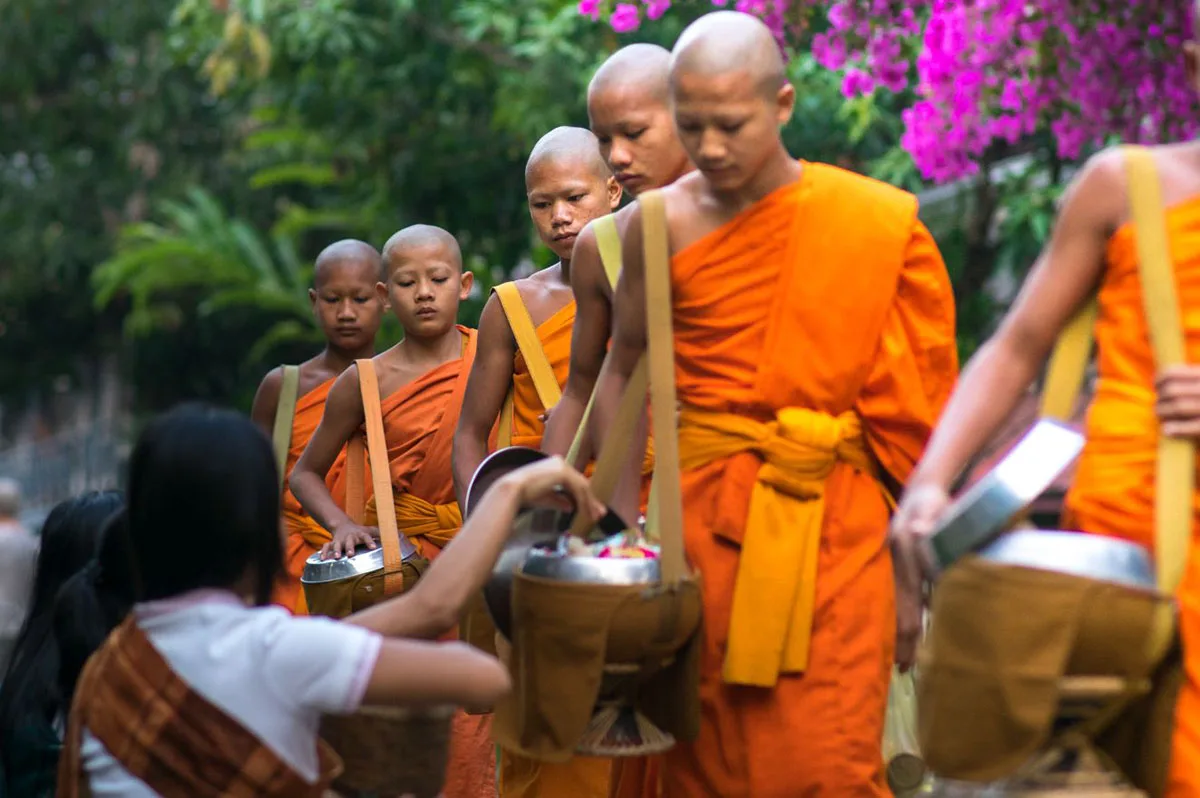Why Do Buddhist Monks Wear Orange Robes?
Buddhist monks wear orange robes because the color symbolizes renunciation, simplicity, and the path to enlightenment. The tradition began over 2,500 years ago when monks dyed discarded cloth with natural ingredients like saffron and turmeric.
🕉️ Introduction: The Bright Mystery of the Orange Robe
If you’ve ever wandered through Thailand, Sri Lanka, or Myanmar, you’ve likely seen groups of serene, barefoot monks wrapped in bold orange or saffron robes. But have you ever stopped to wonder – why orange? Is it just a fashion statement? Or is there a deeper meaning stitched into every thread?
Let’s unravel the spiritual, historical, and even slightly humorous reasons behind the world’s most recognizable religious outfit.
🧶 A Brief History: From Trash to Tradition
Long before Buddhist monks became an Instagrammable icon of serenity, their robes had humble origins. In the Buddha’s time (around the 5th century BCE), monks followed a strict rule: no buying clothes.
Instead, they collected rags – cloth discarded from graveyards, garbage heaps, or roadside – and stitched them together like patchwork quilts. The robes were then dyed using natural ingredients like:
Saffron (for orange tones)
Turmeric
Bark or roots
The result? A faded, rustic orange. Functional. Affordable. Non-fashionable. And most importantly, symbolic.
🔥 Why Orange? The Symbolism Behind the Color
So, why orange? Why not blue, black, or forest green?
1. Detachment from Desire
In Buddhism, orange (or saffron) represents renunciation – letting go of ego, wealth, and desire. Wearing flashy colors or silk would defeat the purpose.
2. Purity Through Fire
Saffron or burnt orange also symbolizes purity through fire – burning away ignorance, ego, and attachment to reach enlightenment.
3. Impermanence (Anicca)
The robes fade over time, just like everything else. This subtle symbolism reminds monks and laypeople alike that nothing lasts forever, including your wardrobe.
🌍 Not Just One Color: Regional Variations
Surprise! Not all Buddhist monks wear the same orange. The color and style of robes actually differ based on region and sect.
| Region | Common Robe Color | Reason |
|---|---|---|
| Thailand, Cambodia | Bright orange or saffron | Tropical climate, Theravāda tradition |
| Sri Lanka | Deep ochre or rust | Symbolizes tradition and age |
| Tibet | Maroon with yellow | Mahāyāna influence and cold climate |
| Japan, China | Black, grey, or brown | Zen simplicity and formality |
So, the next time you see a monk in a different color, don’t panic – they’re not lost. Just from a different school.
😂 Funny Fact: The Original "No-Brand" Fashion Statement
Buddhist monks were anti-fashion long before it was cool.
In fact, the Pali Canon (ancient Buddhist texts) states that monks were forbidden from wearing new clothes. The idea was to “separate from vanity and ego”. Imagine a monk showing up in a Gucci robe – enlightenment might have to wait.
🧐 Lesser-Known Fact: Rice Paddy Robes?
Here’s something most tourists miss:
The robe’s pattern – those stitch lines? – they’re designed to mimic the shape of rice paddies seen from above. It’s a tribute to the Buddhist value of nourishment and cultivation – both physical and spiritual.
Bet you won’t look at monk robes the same way again!
🪡 What's the Robe Made Of?
The typical monk robe is called a “civara”, made from three parts:
Outer robe (uttarasanga)
Inner robe (antaravasaka)
Shoulder cloth (sanghati)
Originally, robes were made from cotton, linen, or hemp. Today, synthetic blends may be used, but the simplicity remains – no zippers, no pockets, no problem.
🙏 Can Laypeople Wear Orange Robes?
No, in most Buddhist traditions, orange robes are reserved for ordained monks. Lay followers typically wear white during religious events, symbolizing purity and devotion – not renunciation.
However, during temporary ordination ceremonies (common in Thailand), even young boys and men may wear orange for a few days or weeks.
✈️ What Does This Mean for Tourists?
If you’re visiting a temple in Thailand or Laos and thinking of showing up in bright orange robes for fun – please don’t. It’s not cosplay.
Monks are highly respected, and their robes carry centuries of tradition, discipline, and symbolism. Dress respectfully and feel free to ask questions – monks are often happy to explain their lifestyle.
Do all Buddhist monks wear orange robes?
No, robe colors vary by region and tradition. Theravāda monks wear orange; Mahāyāna monks often wear maroon, grey, or black.
Why do monks shave their heads?
Shaving the head symbolizes renunciation of vanity, ego, and attachment to physical appearance.
Can women wear orange robes in Buddhism?
Yes! Bhikkhunis (female monks) can wear similar robes, although the color and design may vary slightly by tradition.
🧡 Conclusion: More Than Just a Color
The orange robe of a Buddhist monk is more than spiritual fashion. It’s a living symbol of simplicity, sacrifice, mindfulness, and the path to enlightenment.
From graveyard rags to sacred garments, the robe’s journey mirrors the monk’s own transformation – from attachment to liberation.
💬 Share Your Thoughts!
Have you ever visited a temple and wondered about the monks’ robes? Did you learn something new today?
Drop a comment below – we’d love to hear your thoughts or travel stories!
📲 And if you found this article helpful, share it on social media to spread the wisdom. Your click might just inspire someone to look at monks – and orange – in a whole new light.
